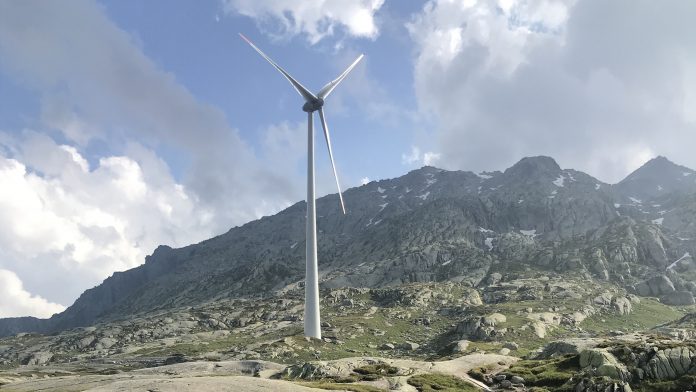In this study, a collaborative research team from Empa and the University of Geneva determine how Switzerland can reduce CO2-emitting electricity imports by diversifying the expansion of renewable energy methods.
What are Switzerland’s goals regarding climate control?
The growing popularity of heat pumps in buildings and electric vehicles on the roads is expected to lead to an increase in electricity consumption in Switzerland in the future. To meet this growing demand, Switzerland relies on electricity imports. However, these often leave a large carbon footprint, as they are powered by either gas or coal-fired power plants.
Switzerland intends to stop emitting greenhouse gases (GHGs) and become climate-neutral by 2050. A majority of strategies on this path to ‘net zero’ consist of replacing fossil fuels with electricity –in the form of electric vehicles and in buildings in the form of heat pumps.
Currently a majority of Switzerland’s electricity is generated from nuclear and hydroelectric power plants, which are technologies that produce a low carbon footprint. However, when scientists consider Europe in its entirety, the situation is significantly different. According to estimations, fossil-fuel power plants for electricity generation are responsible for around 25% of the European GHG emissions.
Switzerland is currently dependent upon electricity imports from neighbouring countries; the share of imported electricity is at approximately 11%. In order to keep the CO2 impact of Switzerland’s electricity mix low, these electricity imports need to be considered.
Until now, data on GHG emissions from imported electricity has been based on average values. However, this new study conducted by researchers from both Empa, and the University of Geneva has analysed electricity imports on an hourly basis, and simultaneously included both the direct and indirect CO2 emissions of electricity production.
While domestically produced electricity causes around 40g of CO2 equivalents per kilowatt hour (KWh), the average of the entire Swiss electricity mix – including imports – is around 108g. “In peak hours, it can even be as much as 600g,” commented Martin Rüdisüli from Empa’s Urban Energy Systems Lab.
How do Switzerland intend to use electricity imports to meet this demand?
Researchers estimate an additional electricity demand of around 12 terawatt hours (TWh) per year, which is approximately 20% more than Switzerland consumes today. “At the same time, we need to replace nuclear power, as the Federal Council plans to phase out nuclear energy,” explained Elliot Romano of the Department for Environmental and Aquatic Sciences at the University of Geneva.
Thus, this form of energy will be replaced with types of renewable energy. However, this is much more volatile, as it does not occur at a steady rate and thus, significantly impacts both the amount produced and the timing of the electricity imports.
Scientists considered this, and in response developed various scenarios to analyse how the Switzerland electricity mix should be composed in future, so that imports—and electricity related GHG emissions—can be minimised.
The study reveals that the share of imported electricity in Switzerland’s electricity mix will expand, and CO2 emissions will grow in response. However, despite these higher ‘imported’ emissions, the increasing electrification of heat and mobility will lead to an approximate 45% reduction in GHG emissions in the overall Swiss energy system.
What challenges to researchers anticipate regarding this transition?
Switzerland will continue to heavily depend on electricity imports in winter, due to lower yields from photovoltaics. The scenario that had the highest potential success rate in the study when it came to emissions reduction envisions, not only an expansion of solar energy to 25 TWh (currently 2.7 TWh), but also a rather large share of wind energy of around 12 TWh (currently 0.1 TWh).
“Wind energy accrues mostly in winter and at night,” concluded Empa’s Rüdisüli. “So, it can help reduce our dependence on imports during those times.”
The research team has observed an increasingly large challenge in the seasonal storage of energy. In all the scenarios, large excesses of electricity are expected in summer due to the foreseen expansion of photovoltaics.
Scientists consider the greatest potential for transferring these surpluses into the winter in Power-to-X technologies, which allow the conversion of leftover electricity into storable chemical energy carriers such as hydrogen or synthetic methane, and in thermal storage systems such as borehole thermal energy storages.









